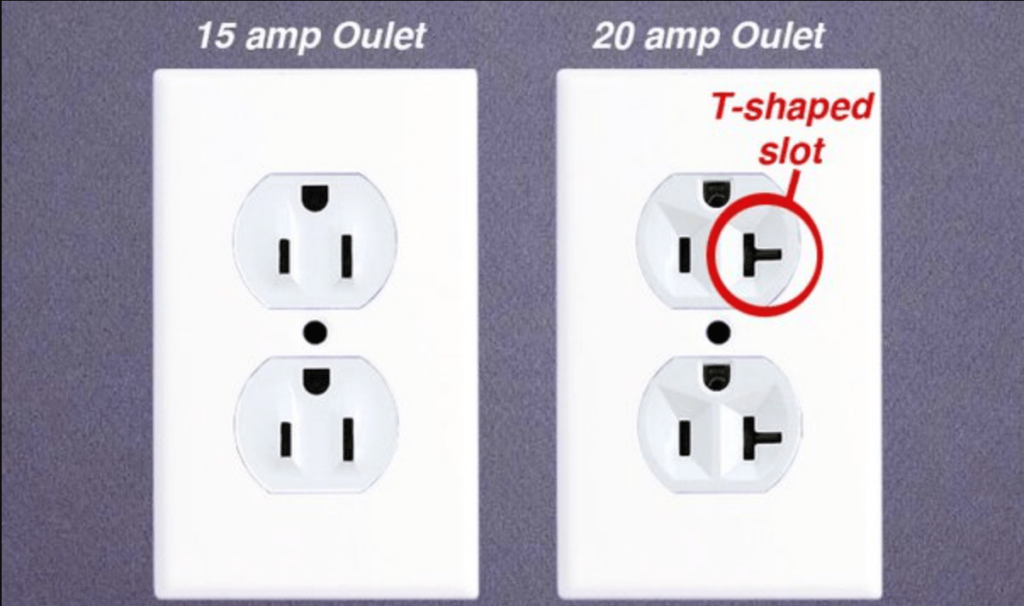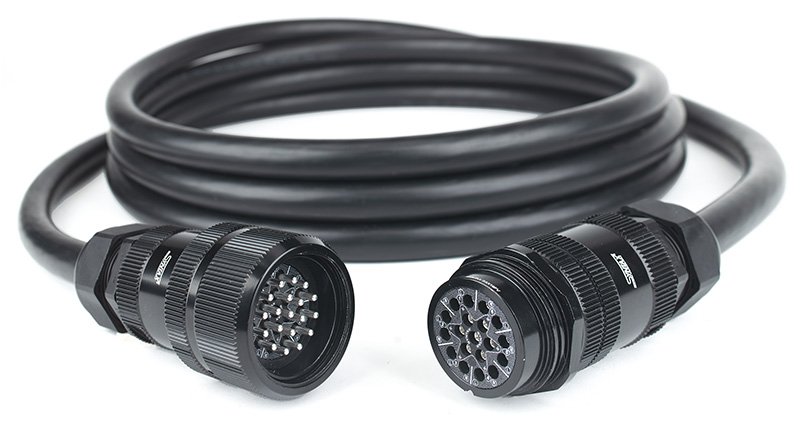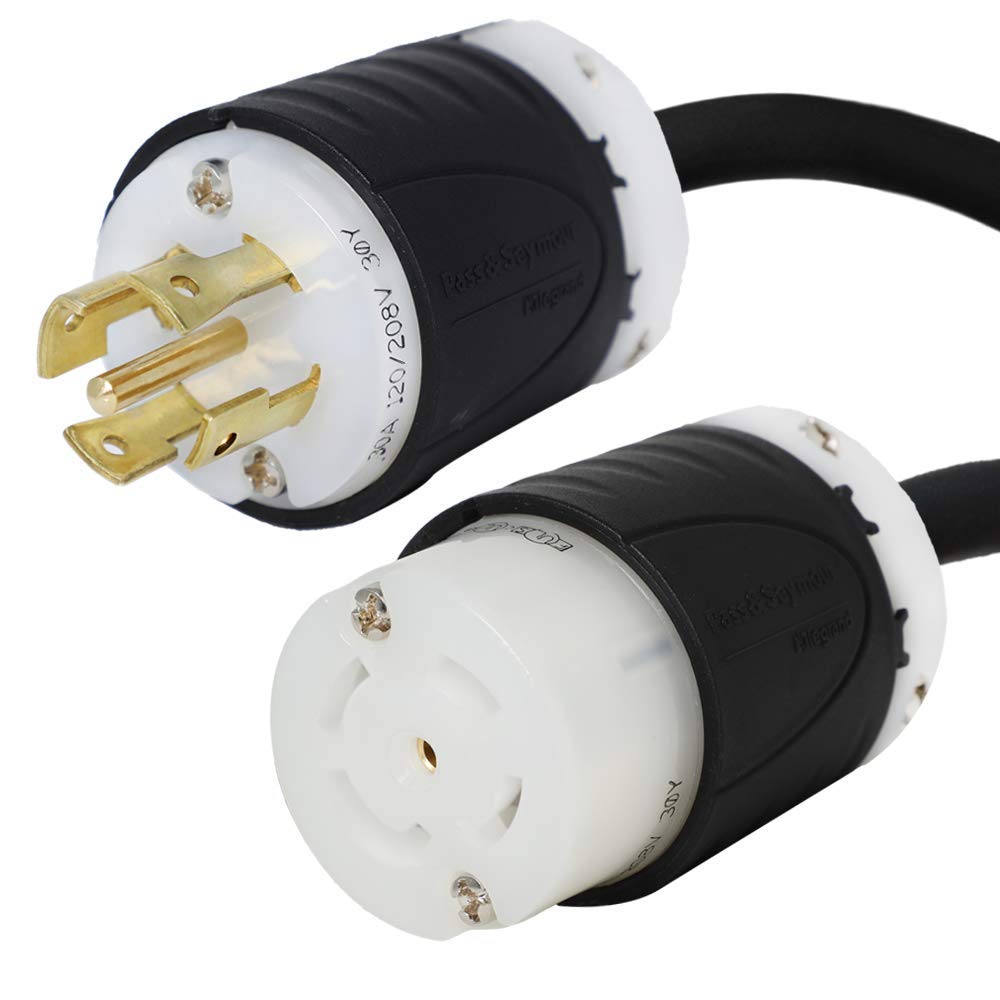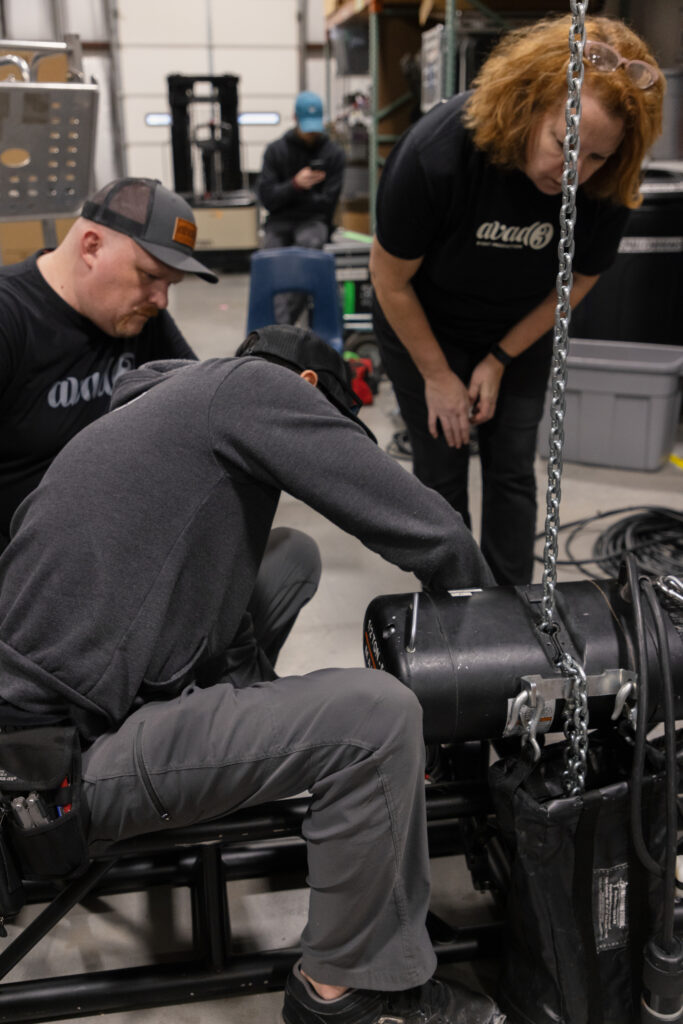Power is such an important detail to get right at events… it’s also one of the most complicated pieces of the puzzle. Hundreds of thousands of dollars of lighting equipment depend on the right amount of power; no more no less. If this detail is overlooked, this could create an expensive bill!
Luckily, this is a detail one of our production experts has mastered. Tyler Herron, our technical director, will walk you through exactly what to look for when planning and executing power for your show.
What’s the Formula
AMPS = WATTS / VOLTS
When plugging fixtures into a wall, a SOCA breakout, or an L21-30 lunchbox, that fixture will be receiving 120V of single-phase power. So when calculating this, you will always use 120V. For the purposes of this article, we will not consider 240V power.
There’s another thing we need to consider with lighting fixtures though. Power Linking.
Many of our fixtures have powercon In/Thru allowing us to use DMX looms to keep things tidy. But there’s a catch if you look at the specs of the fixture. For example. Let’s go through a power plan using just the R1 spots.
- Take a look at the manufacturer’s specs.
- Two things to take note of here:
- Power and Current: 303W, 2.34A @120V.
- Power Linking: 5 units @120V.
- Do the math.
- 303W/120V = 2.525A
- 2.525A x 5 units = 12.625A
Do you see any issues here? What gives? 2 things are at play here. First is the amperage rating. Why is it wrong? Well, in this case, I actually think this is a typo on the product page. If you look at the R2X page, their math checks out. This is why we: DO THE MATH OURSELVES.
So what’s the other issue? Look at the amperage of 5 units linked together. It’s 12.6A. But we have 20A circuits, right? (sort of, more on that later) Is that just an abundance of caution with headroom? Why would they give 7.4A of headroom on this? Answer; They’re not.
If you open one of these fixtures, you’ll find the powercon In/Thru outlets are wired directly together. Power flows directly from blue to grey. But, it’s wired with 14AWG wire. Why is that significant?
Take a look at this link. 14 AWG is rated for 15A max. The National Electrical Code (NEC) has a lot of standards for how electrical systems should be set up. There is a standard you’ll see out there that states: “Unless otherwise marked, circuit breakers should not be loaded to exceed 80 percent of their current rating, where in normal operation the load will continue for 3 hours or more.” This standard gets thrown around a lot, and it’s a good rule of thumb to live by. However, for what we do we can push the limits a little bit. We can push this to 90% when calculating our power plans. This is because, in our experience, no equipment runs at full power 100% of the time. Most of our equipment barely gets over 50% on most shows.

So, what are the major takeaways when designing a power plan:
- All circuits should get 10% headroom.
- 30A should be loaded with no more than 27A
- 20A should be loaded with no more than 18A
- 15A should be loaded with no more than 13.5A
Power is fickle, and we like headroom. That 15A rating for 14AWG already has the 80% NEC rule built in. You can safely run 15A on this wire. So how does the 5-unit link max make sense? You don’t want to overload the WIRE because the wire is the weak link. Regardless of what size breaker these are plugged into. Now, are we just resigned to only having 5 R1 spots on a circuit? Well, no. Doing that math how many can we have on one 20A circuit?
Take the total number of amps available and divide that by the amps per unit.
16A / 2.525A = 6.33 units.
So we can safely run (6) R1 spots on one 20A circuit. But, you have to consider what wire it’s being carried on. If we plug 6 units into a power strip are we okay? Well, take a look at the wire gauge on most power strips and answer that for yourself. (hint: they’re mostly 14AWG) On top of this, you have to consider what the actual outlet your plugging into is rated for. You’ll see 2 different kinds of outlets:
 Â Socapex Cables
 Socapex Cables

Socapex, SOCA, for short. Pronounced two ways: Soh-ca-pecks and Sock-ah-pecks and for short soh-ca and sock-ah.
Socapex cable is a multi-cable that is comprised of 19 conductors. The conductors are…wait for it…12AWG conductors. This cable carries (6) 20A circuits. Each circuit uses 3-wires, for single-phase service. A hot, a neutral, and a ground. If you’re keen, you’ll notice there is an extra pin on this cable. 6 x 3 = 18. That extra pin? Don’t worry about it. It’s not for anything.
L21-30

L21-30 is a unique beast. A single L21-30 cable has (5) 10AWG conductors inside. Looking at the link above, 10AWG is rated for 30A. I’m sure you’ve heard that L21-30 is (3) split 30 circuits. L21-30 is basically a mini-power distro. The 5 wires are carrying a 3-phase service. You have (3) hots, a neutral, and a ground. Each hot leg is able to carry 30A of power. Meaning the whole cable is capable of 90A.
On the lunchboxes, you’ll notice the outlets are rated for 20A and they are color coded Black, Red, and Blue. In addition to this, you have (6) breakers that are rated for 20A. When using lunchboxes, each pair of circuits has 30A available to them and each circuit is capable of CARRYING 20A. So, you could plug 20A worth of stuff into Circuit 1, but then you only have 10A worth of power on Circuit 2. It’s safer to simply say each Circuit is 15A and leave it at that.
Power Distro Balancing & Load Capacity
Another thing to remember is the power distro’s rating. A 200A 3-phase distro is rated for 200A per leg. Giving us a total of 600A. Let’s do some math here.
Let’s say a SOCA distro has;
- 3 L21-30 Outputs
- 6 SOCA outputs
- 6 Edison Outputs.
This gives us:
- 18 – 15A circuits from L21-30
- 36 – 20A circuits from SOCA
- 6 – 20A Circuits from Edison
If you total up the available amperage on all of these circuits you get the following:
(18 * 15A) + (42 * 20A) = 1110A
However, the total amperage we can use is 600A. You cannot load up every circuit on the distro and expect everything to be okay. You need to do total calculations on everything being plugged in and make sure it’s under the total capacity.
On top of this, remember the distro is 200A per leg. This is where load balancing comes into play. Every distro does it differently, but the circuits will be split evenly between the 3 legs of power. For L21-30 lunchboxes, circuits 1-2 are on leg 1, 3-4 are on leg 2, and 5-6 are on leg 3.
You should be doing total calculations per circuit, per leg, and overall to determine if you are within the capacity of the power distribution system.

Get a Second Opinion
Power is not something to overlook. Always double-check your work and do not rely on all the numbers you see online (even the manufacturer). Even those can be faulty in a real-world situation.
Know the different types of cables that are going to be carrying the power. Companies make many types of cable rated for different gauges, so don’t assume.
Lastly, if you are unsure, always get an expert’s opinion. It also helps to get a second opinion from someone with a fresh perspective. They can pick out problems that you may have overlooked after staring at calculations for so long.
